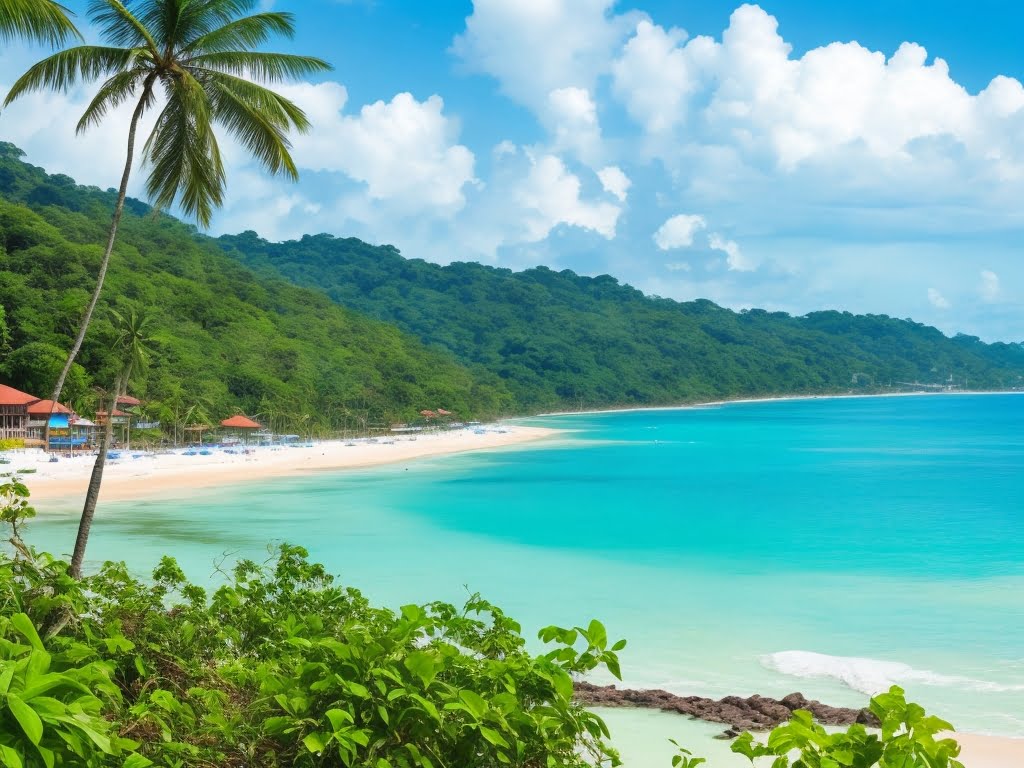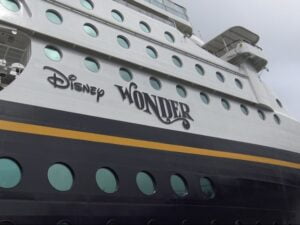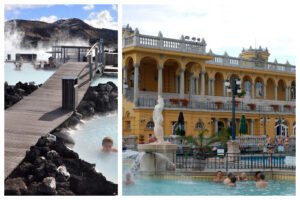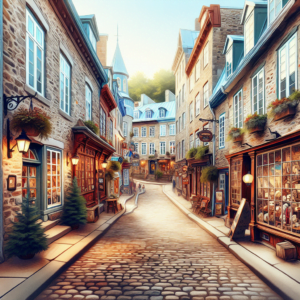Embark on an unforgettable exploration as you delve into the enchanting world of Panama’s coastal biodiversity. From the pristine beaches to the vibrant coral reefs, this tropical paradise holds an incredible array of flora and fauna waiting to be discovered. Join us on a journey through Panama’s coastal wonders, where you will be captivated by the beauty of its diverse landscapes and the fascinating creatures that call this place home. Get ready to embark on an adventure like no other, as you immerse yourself in the vibrant colors, sounds, and experiences that await you in this tropical treasure trove.
Table of Contents
TogglePanama Must See Places: The Importance of Panama’s Coastal Biodiversity
Panama, known as the “Bridge of the Americas,” is not only a geographical marvel but also a treasure trove of diverse ecosystems and abundant marine life. Its unique position between North and South America, as well as its extensive coastline along the Pacific Ocean, the Caribbean Sea, and the Gulf of Chiriquí, has given rise to an astounding array of flora and fauna. From the vibrant coral reefs teeming with colorful fish to the lush tropical rainforests home to rare species, Panama’s coastal biodiversity plays a crucial role in sustaining the delicate balance of our planet.
Diverse Ecosystems
Panama’s coastal region boasts an incredible variety of ecosystems, each contributing to the overall biodiversity of the area. From the dense mangrove forests and thriving coral reefs to the secluded islands and lush rainforests, each ecosystem provides a unique habitat for a plethora of species.
Sustaining Marine Life
One of the main reasons Panama’s coastal biodiversity is of utmost importance is its role in sustaining marine life. The coastal region acts as a nursery ground for numerous marine species, providing them with protection, breeding grounds, and abundant food sources. The mangrove forests and seagrass beds serve as vital habitats for young fish, while the coral reefs act as underwater cities bustling with life.
Unique Species
Panama’s coastal region is home to a multitude of unique and endangered species that are found nowhere else on Earth. From vibrantly colored poison dart frogs and three-toed sloths in the rainforests to the iconic humpback whales and sea turtles in the Pacific and Caribbean waters, these species contribute to the rich tapestry of Panama’s biodiversity.
Economic Benefits
Beyond its ecological significance, Panama’s coastal biodiversity also provides valuable economic benefits for the country. The vibrant coral reefs and diverse marine life attract tourists from all over the world, who come to explore the underwater wonders through snorkeling, diving, and sport fishing. This tourism industry generates revenue, supports local businesses, and provides employment opportunities for the communities living along the coast.
Pacific Coast
Introduction
Stretching along the western edge of Panama, the Pacific Coast is a captivating blend of stunning landscapes and rich marine habitats. From the bustling capital city of Panama City to the remote islands of Coiba National Park, the Pacific Coast offers a wide range of experiences for nature enthusiasts and adventure seekers alike.
Bays and Estuaries
The Pacific Coast is dotted with numerous bays and estuaries, creating a fascinating mosaic of habitats for both aquatic and terrestrial species. These protected areas serve as essential breeding grounds and foraging grounds for a variety of fish, birds, and other wildlife.
Mangroves
The mangrove forests lining the Pacific Coast are a vital ecosystem that plays a crucial role in maintaining coastal stability and providing critical habitat for a wide variety of species. These dense forests act as a nursery for many marine organisms, offering food, shelter, and protection from predators.
Coral Reefs
Panama’s Pacific Coast is renowned for its vibrant coral reefs, which support a diverse community of marine life. From colorful reef fish to majestic sea turtles and even the occasional hammerhead shark, these reefs provide a haven for countless species, making them a mecca for divers and snorkelers.
Marine Wildlife
The Pacific waters of Panama are teeming with an abundance of marine wildlife. From the annual migration of humpback whales to the playful dolphins and graceful sea turtles, there is always something awe-inspiring to witness off the coast of Panama.
Caribbean Coast
Introduction
The Caribbean Coast of Panama is a tropical paradise brimming with breathtaking beauty and unparalleled biodiversity. With its crystal-clear waters, lush mangrove forests, and vibrant coral reefs, this region is a haven for nature lovers and those seeking an immersive experience in the wonders of the Caribbean.
Archipelagos
One of the highlights of the Caribbean Coast is the archipelagos that dot the turquoise waters. These clusters of islands offer pristine beaches, secluded coves, and unparalleled opportunities for snorkeling and diving. Each island has its unique charm and plays host to a myriad of flora and fauna.
Seagrass Beds
The Caribbean Coast is home to extensive seagrass beds, which are essential for the survival of many marine species. These underwater meadows provide food and habitat for young fish, act as a nursery for sea turtles, and help stabilize the coastline by reducing erosion.
Barrier Reefs
The coral reefs along the Caribbean Coast are some of the most diverse and vibrant in the world. From the magnificent brain corals to the delicate fan corals, these reefs are home to an incredible variety of marine life, including colorful fish, crustaceans, and even elusive seahorses.
Tropical Rainforests
In addition to its coastal wonders, the Caribbean Coast is also bordered by lush tropical rainforests. These dense jungles are home to an extraordinary array of plant and animal species, including monkeys, toucans, and orchids. Exploring these rainforests offers visitors a chance to witness the true essence of Panama’s biodiversity.
Gulf of Chiriquí
Introduction
Located on Panama’s Pacific Coast, the Gulf of Chiriquí is a hidden gem known for its pristine beauty and abundant marine life. With its stunning volcanic islands, crystal-clear waters, and diverse habitats, this region offers a wide range of activities, from snorkeling and diving to whale watching and beachcombing.
National Marine Park
The Gulf of Chiriquí is home to the Coiba National Marine Park, a UNESCO World Heritage site known for its incredible biodiversity both above and below the water. The park encompasses numerous islands and coral reefs, providing a sanctuary for endangered species and allowing for scientific research and conservation efforts.
Volcanic Islands
One of the unique features of the Gulf of Chiriquí is its volcanic islands, which rise dramatically from the depths of the ocean. These islands offer stunning landscapes, pristine beaches, and the opportunity to explore untouched wilderness.
Whale Watching
The warm waters of the Gulf of Chiriquí attract humpback whales during their annual migration. Visitors have the chance to witness these majestic creatures breaching and tail-slapping, creating an unforgettable experience.
Sea Turtles
The Gulf of Chiriquí is also a critical nesting area for several species of sea turtles, including the endangered hawksbill and leatherback turtles. Witnessing these ancient reptiles coming ashore to lay their eggs is a truly remarkable sight and a testament to the importance of preserving their fragile habitats.
Coiba National Park
Introduction
Coiba National Park, located in the Gulf of Chiriquí, is a natural paradise encompassing both land and sea. Its ecological significance is recognized worldwide, and it is considered one of the most pristine and biodiverse areas in the Eastern Pacific. The park offers a unique opportunity for visitors to immerse themselves in a world teeming with life and embark on unforgettable adventures.
Island Biodiversity
Coiba Island, the largest island in the park, is home to an astonishing diversity of species. It is estimated that over 80% of the plant species found on the island are unique to Coiba, making it a biodiversity hotspot. Additionally, the island is home to various endemic bird species and rare mammals, making it a paradise for nature enthusiasts and birdwatchers.
Marine Protected Area
Coiba National Park’s significance extends underwater, with its coral reefs and marine ecosystems being of global importance. The park is home to over 760 species of fish, including colorful reef fish, sharks, and rays. The protected status of the park ensures the preservation and conservation of these fragile ecosystems for future generations.
Snorkeling and Diving
With its crystal-clear waters and vibrant reefs, Coiba National Park is a mecca for snorkeling and diving enthusiasts. The park offers a stunning array of dive sites, each offering a unique opportunity to discover the incredible marine life that resides beneath the surface. From swimming alongside turtles and dolphins to encountering schools of tropical fish, diving in Coiba is an experience like no other.
Research and Conservation
Coiba National Park serves as an important hub for scientific research and conservation efforts. Researchers from around the world come to study the park’s unique ecosystems and contribute to its protection. The ongoing efforts to understand and safeguard the park’s biodiversity ensure its continued survival and provide valuable insights into global conservation.
Darien Gap
Introduction
The Darien Gap, located on the easternmost region of Panama, is a vast and untouched wilderness that remains largely unexplored. This remote and challenging landscape is home to an incredible variety of plant and animal species, making it a haven for wildlife enthusiasts and intrepid adventurers.
Untouched Wilderness
The Darien Gap is known for its untouched wilderness and rugged beauty. Dense rainforests, towering mountains, and pristine rivers create a habitat that remains largely unaffected by human presence. Exploring this untamed landscape offers a glimpse into a world untouched by time.
Indigenous Communities
Within the Darien Gap reside indigenous communities, such as the Emberá and Wounaan people, who have called this region home for centuries. These communities have a deep connection to the land and live in harmony with nature, offering visitors a unique cultural experience and a chance to learn from their traditional way of life.
Wildlife Refuge
The Darien Gap serves as a vital wildlife refuge, providing sanctuary for numerous endangered species. Jaguars, tapirs, and harpy eagles are just a few examples of the diverse wildlife that call this region home. Visitors to the Darien Gap may encounter these elusive creatures while trekking through the dense forests.
Chucunaque River
The Chucunaque River, which flows through the heart of the Darien Gap, offers a unique opportunity to explore the region by boat. Navigating through the calm waters of the river allows visitors to immerse themselves in the natural wonders of the surrounding rainforest and provides a chance to spot wildlife along its banks.
Pearl Islands
Introduction
The Pearl Islands, located in the Gulf of Panama, are an archipelago of stunning beauty known for their white sandy beaches, turquoise waters, and incredible marine life. These islands offer a tropical paradise for those seeking relaxation, adventure, and a chance to witness some of nature’s most awe-inspiring spectacles.
Archipelago Beauty
The Pearl Islands are renowned for their idyllic beauty, with each island boasting its own charm. From the sleepy and secluded Contadora Island to the lush and tropical Isla del Rey, there is an island to suit every traveler’s desires. Pristine beaches, swaying palm trees, and tranquil bays await those who venture to this tropical paradise.
Marine Sanctuaries
The crystal-clear waters surrounding the Pearl Islands are teeming with marine life, making them a popular destination for snorkeling and diving. The underwater world of the islands is home to colorful coral reefs, playful dolphins, and an abundance of tropical fish. Exploring these marine sanctuaries is like stepping into a vibrant and captivating aquarium.
Humpback Whale Migration
One of the most remarkable natural phenomena that occur around the Pearl Islands is the annual humpback whale migration. These majestic creatures travel thousands of miles from their feeding grounds to the warm waters of Panama to mate and give birth. Witnessing these gentle giants breaching and tail-slapping is an experience that leaves a lasting impression.
Sport Fishing
The Pearl Islands are a paradise for sport fishing, with the waters around the islands being home to an impressive variety of game fish. Fishing enthusiasts can try their hand at catching marlin, tuna, and dorado, among others. The thrill of battling these powerful fish against the backdrop of the stunning island scenery is an experience that should not be missed.
Bay of Panama
Introduction
The Bay of Panama, located on the southern coast of the country, is a fascinating blend of natural wonders, historical significance, and urban development. From its rich mangrove forests to its bustling cityscape, this bay offers a diverse range of experiences for visitors.
Historical Significance
The Bay of Panama holds immense historical significance, as it was the starting point for the Spanish conquest of the Inca Empire and the main port for the transfer of gold and silver back to Europe. Ruins of ancient forts and colonial architecture stand as a testament to this rich history, offering visitors a chance to step back in time and immerse themselves in the region’s past.
Mangrove Forests
The bay is home to extensive mangrove forests, which play a crucial role in maintaining the health of the coastal ecosystem. These unique forests act as nurseries for marine life, filter pollutants from the water, and provide a vital habitat for countless bird species. Exploring the peaceful waterways of the mangroves offers a serene and immersive experience in nature.
Avian Species
The Bay of Panama is a bird lover’s paradise, with its mangrove forests and coastal wetlands attracting a plethora of avian species. From vibrant flamingos and herons to elegant frigatebirds and pelicans, the bay is a haven for birdwatchers seeking to witness the grace and beauty of these winged creatures in their natural habitat.
Urban Coastal Development
The Bay of Panama is also characterized by urban coastal development, with the bustling Panama City standing as a testament to the country’s progress. Skyscrapers, luxury hotels, and vibrant nightlife blend with the natural beauty of the bay, creating a dynamic juxtaposition of modernity and nature. Visitors can enjoy the city’s cosmopolitan atmosphere while still being in close proximity to the bay’s natural wonders.
San Blas Islands
Introduction
The San Blas Islands, located on Panama’s Caribbean Coast, offer a unique blend of picturesque beauty, cultural heritage, and vibrant marine life. Home to the indigenous Kuna Yala people, this archipelago is renowned for its pristine beaches, intricate handicrafts, and the incredible biodiversity that surrounds these tropical islands.
Indigenous Kuna Yala
The San Blas Islands are home to the indigenous Kuna Yala people, who have maintained their traditional way of life for centuries. Visitors to the islands have the opportunity to immerse themselves in the Kuna Yala culture, witnessing their vibrant traditional dress, learning about their customs, and admiring the intricate molas, fabric panels made by Kuna women.
Coral Reef Biodiversity
The San Blas Islands are renowned for their healthy coral reefs, which support a thriving ecosystem of marine life. Snorkeling and diving enthusiasts can explore the colorful reefs and encounter an array of tropical fish, sea turtles, and even the occasional nurse shark. The crystal-clear waters of the San Blas Islands offer a window into an underwater paradise.
Traditional Fishing
Fishing is an integral part of the Kuna Yala culture, and visitors to the San Blas Islands have the opportunity to witness traditional fishing techniques firsthand. Local fishermen use handcrafted sailing canoes and traditional techniques passed down through generations to catch fish, providing a sustainable source of food for the community.
Sailing and Boating
The San Blas Islands are a popular destination for sailing and boating enthusiasts, thanks to their calm waters and stunning landscapes. Sailing between the islands offers a chance to explore hidden coves, remote beaches, and uninhabited islands. The tranquil waters and gentle breezes make the San Blas Islands an ideal destination for those seeking a serene and unforgettable sailing experience.
Colon Province
Introduction
Colon Province, located on Panama’s Caribbean Coast, is a region of contrasts. From its palm-fringed beaches and lush rainforests to the bustling city of Colon and the engineering marvel of the Panama Canal, this province offers a diverse range of experiences for visitors.
Caribbean Beaches
Colon Province is blessed with a coastline that stretches for miles, offering pristine beaches that cater to every visitor’s desires. From the popular tourist beaches with vibrant beachfront bars to secluded coves hidden amidst lush vegetation, there is a beach to suit every taste. Sunbathing, swimming, and beachcombing are among the many activities to enjoy along the province’s charming coastline.
Gatun Lake
Gatun Lake, part of the Panama Canal, is a vast body of water that spans much of Colon Province. This man-made lake not only serves as a crucial waterway for international trade but also provides a sanctuary for an incredible variety of flora and fauna. Boat tours of the lake offer an opportunity to witness the abundant wildlife, including monkeys, sloths, and numerous bird species.
Colon Free Zone
The Colon Free Zone, located in the city of Colon, is the largest free trade zone in the Western Hemisphere and a vital economic hub. It attracts visitors and businesspeople from all over the world, offering a wide range of goods at duty-free prices. The Colon Free Zone’s influence extends beyond its borders, contributing to the economic growth of the entire province.
Manzanillo Wildlife Refuge
Nestled within Colon Province’s rainforest lies the Manzanillo Wildlife Refuge, a protected area that is home to a staggering diversity of plant and animal species. Trekking through this lush and verdant wilderness provides a chance to spot elusive creatures such as jaguars, ocelots, and numerous bird species. The refuge serves as a reminder of the rich biodiversity that thrives within Colon Province’s borders.
As you embark on a journey through Panama’s coastal biodiversity, you will be amazed by the sheer beauty and ecological significance of this Central American gem. From the Pacific Coast’s vibrant coral reefs and mangrove forests to the Caribbean’s exotic archipelagos and tropical rainforests, each region offers a unique and awe-inspiring experience. Whether you are a nature lover, an adventure seeker, or a cultural enthusiast, Panama’s coastal biodiversity will captivate your senses and leave you with memories to last a lifetime. So pack your bags, immerse yourself in this tropical paradise, and embark on a journey that will deepen your appreciation for the wonders of nature.





